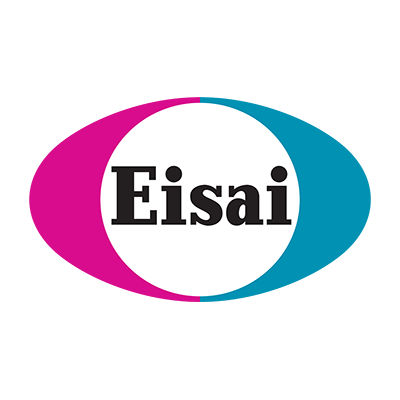预约演示
更新于:2025-05-07
TNKS1 x PARP
更新于:2025-05-07
关联
22
项与 TNKS1 x PARP 相关的药物作用机制 PARP1抑制剂 [+3] |
原研机构 |
最高研发阶段临床2期 |
首次获批国家/地区- |
首次获批日期1800-01-20 |
作用机制 PARP抑制剂 [+1] |
非在研适应症 |
最高研发阶段临床2期 |
首次获批国家/地区- |
首次获批日期1800-01-20 |
作用机制 TNKS1抑制剂 [+1] |
原研机构 |
非在研适应症 |
最高研发阶段临床1期 |
首次获批国家/地区- |
首次获批日期1800-01-20 |
13
项与 TNKS1 x PARP 相关的临床试验NCT06853496
Investigator-initiated Phase I Study of a Tankyrase Inhibitor RK-582 for Patients with Unresectable Metastatic Colorectal Cancer
Tankyrase, the fifth and sixth members of the poly(ADP-ribose) polymerase (PARP) family (PARP-5a/b), is responsible for poly(ADP-ribosyl)ation (PARylation), and was originally identified as a factor that promotes the function of telomerase, an enzyme that elongates telomeres. Subsequently, it was reported that tankyrase enhances Wnt/beta-catenin signaling by PARylation and subsequent degradation of AXIN, a negative regulator of Wnt/beta-catenin signaling, suggesting that tankyrase inhibitors may be a new treatment for colorectal cancer.
RK-582 was discovered through lead optimization from a tankyrase inhibitor that suppresses the growth of human colorectal cancer cells. It was confirmed that RK-582 selectively inhibited tankyrase among the PARP family enzymes, suppressed the growth of Wnt/beta-catenin signal-dependent human colorectal cancer cells at both the levels of cultured cells and xenograft tumors in immunodeficient mice, and accumulated AXIN to decrease beta-catenin and downregulate the target gene expression as pharmacodynamic biomarkers.
Based on these findings, RK-582 is thought to have potential as a new treatment for colorectal cancer patients. At present, however, the efficacy and safety of RK-582 in humans have not been confirmed. Thus, this clinical trial is conducted with the aim of investigating the tolerability and safety of RK-582 for patients with unresectable advanced or recurrent colorectal cancer as a first-in-human trial, in which RK-582 is administered to humans for the first time.
RK-582 was discovered through lead optimization from a tankyrase inhibitor that suppresses the growth of human colorectal cancer cells. It was confirmed that RK-582 selectively inhibited tankyrase among the PARP family enzymes, suppressed the growth of Wnt/beta-catenin signal-dependent human colorectal cancer cells at both the levels of cultured cells and xenograft tumors in immunodeficient mice, and accumulated AXIN to decrease beta-catenin and downregulate the target gene expression as pharmacodynamic biomarkers.
Based on these findings, RK-582 is thought to have potential as a new treatment for colorectal cancer patients. At present, however, the efficacy and safety of RK-582 in humans have not been confirmed. Thus, this clinical trial is conducted with the aim of investigating the tolerability and safety of RK-582 for patients with unresectable advanced or recurrent colorectal cancer as a first-in-human trial, in which RK-582 is administered to humans for the first time.
开始日期2025-03-13 |
申办/合作机构 |
NCT06502743
Phase 2 Study of First-line Carboplatin and Paclitaxel in Combination With Pembrolizumab, Followed by Maintenance Pembrolizumab With or Without Nesuparib, in Patients With Newly Diagnosed Advanced or Recurrent MMR-proficient (pMMR) Endometrial Cancer
The goal of this study is listed below.
Part A (Safety Run-in Phase) : To determine feasibility of pembrolizumab and nesuparib combination as maintenance therapy in patients with MMR-proficient advanced and recurrent endometrial cancer. Feasibility is defined as a dose-limiting toxicity (DLT) rate less than or equal to 33%.
Part B (Randomization Phase)
: To evaluate the efficacy of pembrolizumab and nesuparib combination/ pembrolizumab monotherapy as maintenance therapy in patients with MMR-proficient advanced stage and recurrent endometrial cancer. Efficacy will be assessed by investigator assessed progression free survival (PFS) as assessed by RECIST 1.1.
Part A (Safety Run-in Phase) : To determine feasibility of pembrolizumab and nesuparib combination as maintenance therapy in patients with MMR-proficient advanced and recurrent endometrial cancer. Feasibility is defined as a dose-limiting toxicity (DLT) rate less than or equal to 33%.
Part B (Randomization Phase)
: To evaluate the efficacy of pembrolizumab and nesuparib combination/ pembrolizumab monotherapy as maintenance therapy in patients with MMR-proficient advanced stage and recurrent endometrial cancer. Efficacy will be assessed by investigator assessed progression free survival (PFS) as assessed by RECIST 1.1.
开始日期2024-09-12 |
申办/合作机构  Yonsei University Yonsei University [+2] |
100 项与 TNKS1 x PARP 相关的临床结果
登录后查看更多信息
100 项与 TNKS1 x PARP 相关的转化医学
登录后查看更多信息
0 项与 TNKS1 x PARP 相关的专利(医药)
登录后查看更多信息
578
项与 TNKS1 x PARP 相关的文献(医药)2025-05-01·Life Sciences
Unveiling the potential of tankyrase I inhibitors for the treatment of type 2 diabetes mellitus: A hybrid approach using network pharmacology, 2D structural similarity, molecular docking, MD simulation and in-vitro studies
Article
作者: Patel, Ankit ; Patel, Dhaval ; Patel, Bhumika ; Nayak, Yogendra ; Baby, Krishnaprasad ; Ghoshdastidar, Krishnarup ; Viswanathan, Kasinath ; Yadav, Ruchi
2025-04-01·European Journal of Medicinal Chemistry
Substitutions at the C-8 position of quinazolin-4-ones improve the potency of nicotinamide site binding tankyrase inhibitors
Article
作者: Kampasis, Dionysis ; Lehtiö, Lari ; Karelou, Maria ; Waaler, Jo ; Brinch, Shoshy A ; Bosetti, Chiara ; Galera-Prat, Albert ; Kostakis, Ioannis K ; Dhakar, Saurabh S ; Alaviuhkola, Juho
2025-03-01·The FEBS Journal
Article
作者: Brückner, Martina ; Schmidt, Olivia ; Bernkopf, Dominic B.
14
项与 TNKS1 x PARP 相关的新闻(医药)2025-04-18
·医药速览
DOI: 10.1021/acs.chemrev.4c00284DNA编码文库(DEL)技术通过亲和力筛选、和深度测序,对庞大的编码小分子文库进行平行筛选,产生丰富的数据集。优秀的文库设计与合成,严谨的筛选逻辑和严格的筛选操作,足够的测序深度和准确性,对于成功发现DEL Hit都至关重要。然而,更好的解析DEL筛选后数据往往是成功的"成功的临门一脚"。随着计算科学的发展,DEL与计算科学的结合似乎找到了完美的应用场景:DEL有提供丰富平行数据的能力,为训练模型提供数据,并可完成验证闭环;计算科学有庞大的运算能力,可以抽丝剥茧,为DEL产生的大量数据集提供内在的关联。然而,事情并没有那么简单而理想。近期,Chemical Review刊载了一篇综述,系统地分析了DEL数据的模式、影响数据的各种因素,并提供了提高DEL驱动的Hit发现的准确性和有效性的方法和计算工具。01基于DEL的Hit发现DNA编码文库(DEL)筛选技术将小分子连接到可读取的DNA条形码上,模拟展示技术固有的“表型”与“基因型”的联系,为“化学型”与“基因型”建立起对应关系,可以快速生成庞大的化学文库,并针对生物大分子进行亲和力筛选和随后的DNA序列解析,以及对应化学结构的鉴定与确认。传统的DEL筛选及随后的Hit验证、优化已经形成了规范式的操作,为各种类型的靶标发现了极具潜力的苗头化合物,并已经成功推动多个DEL Hit进入到了临床试验阶段(见文末往期分享)。当前,随着计算科学的发展,“碰撞”到DEL筛选产生的与生物大分子相互作用的大量结构信息,两者相互吸引,正在另一条Hit发现道路上彼此成就。然而,建立两者之间的联系,不可忽视DEL数据本身固有的局限性。只有深入理解DEL数据的特征,才能真正地架起DEL筛选与计算科学之间的桥梁,充分发挥两项技术结合更大的潜力。在DEL技术的各个阶段建立稳健、标准化的方法至关重要:包括从设计编码方案,到分子砌块的挑选和反应验证,再到Hit的诠释。进一步推进DEL平台从筛选所产生的数据中获得更多的收益。02DEL数据执行模式2.1、离散Hit发现DEL的概念最初受到噬菌体展示及相关技术的启发,因子,DEL Hit最广泛的识别方法也类似于噬菌体展示,经过多周期的筛选产生富集分子,然后合成它们,再进行验证评估。早期的DEL研究模拟生物淘选,通过寻找将PCR扩增筛选后编码的序列信息翻译成化学结构的方法,使在筛选步骤后文库扩增成为可能。二代测序技术(NGS)的出现及其对DEL研究的适应,极大地满足了DEL筛选后数据解析的需求,并进一步使提高DEL文库规模大小更有意义。DEL筛选产生的分子根据其富集程度高于阈值进行分类,然后从其中选择最具潜力的部分进行测试验证。这些分子可以通过off-DNA或DNA偶联物进行合成,通过一些生物物理的方法进行验证,如荧光各向异性、表面等离子共振、ELISA-型分析、微热泳、质谱等。通过这些方法鉴定出的Hit,再结合分子特性进行挑选,供后续药化团队进一步进行先导化合物优化。2.2、序列富集与结构关系测序能力的不断进步,使得可观察到的DEL Hits的数量,远远超过了可以通过试验测试的通量。因此,需要结合算法对DEL Hits进行分类,以最大限度地确定最佳候选分子的可能性,同时最小化挑选的工作量。DEL数据本身就可以指导DEL Hit挑选的决策。如,DNA序列计数、和富集化学结构片段相似模式。定量读取每个分子的序列计数的形式,以及Hits之间的结构相似模式,可以增强对挑选出的潜在DEL Hits的准确率的信心。DEL筛选背后的逻辑是:相比于低亲和力的分子,靶标富集高亲和力的分子。因此,从大量富集的分子中挑选时,可能会优先考虑具有高序列计数的分子。然而,序列计数是否真正反映了结合效力还是个模糊的问题。基于简单的平衡结合原理,在一定范围内,富集度和靶标亲和力之间存在相关性,但仍有许多因素会使这种关系复杂化,如,编码分子与显示分子之间的明显差异等(与酶连接DNA片段的效率和化学连接小分子片段的效率差异有关)。研究表明,当仔细控制以消除噪声源时,序列计数与亲和力之间存在相关性;有研究通过在文库中掺入明确的弱结合物和强结合物,它们的富集程度不同;基于此,可以通过序列计数指导某些靶标亲和力配体发现。然而,这种相关性在较大的文库中通常不存在,原因很多,有合成过程的问题,也有测序深度的问题。然而,序列计数也不应该被完全忽视。有些研究也表明,如在AS-MS实验中,DEL的富集和回收率之间存在适度的相关性;也有研究表明,有些阔多个靶标的DEL的高富集分子比低富集分子更有可能具有活性。执行不同严格程度的筛选可以减少某些噪声源,这可以提高富集数据的可靠性。DEL Hit通常存在化学相关化合物簇,并且这种结构富集模式可以用于定位,显示出某些一致性药效特征模式,为靶标相关配体的SAR提供丰富的信息。此外,当从不同的Hit系列,以及不同的文库中,观察到结构相似性模式,可以增加数据的可靠性,为观察到的Hit的真实性提供信心。这种DEL的独到之处可以指导先导化合物的优化开发,帮助了解的哪些部分具有可变性,或者是结构保守的,为集中精力提供努力的方向。然而,也不可过度解读结构-富集之间的关系。就像序列富集作为定量参数一样,也有其它的因素可以影响特定类型的Hits结构。过度依赖显性特征而忽视单元素集和形似模式不明显的化合物,可能会导致过早地丢弃潜在有价值的化学型。2.3、通过比较筛选获得更深入的见解DEL筛选在几个方面表现出色:它的速度,几周时间即可完成;它的吞吐量,限制它的不是量有多少,而是能测多少(测序深度);它成本效益,仅需要几个到十几个微摩尔的蛋白靶标就可完成一次筛选,并且可平行多条件筛选。因此,可通过设置多个筛选,通过比较不同条件下的筛选结果,获得更加具有逻辑的信息。如,通过DEL筛选对不同物种的血清蛋白进行平行筛选,获得明显不同的筛选指纹,从而能够识别选择性结合物和混杂的泛结合物。而通过竞争性比较DEL筛选,已成为预测DEL靶向选择性和评估耐药性突变敏感性的常规操作。此外,通过设置竞争性结合物的控制筛选条件进行筛选,可以获得有关DEL Hit结合位点的宝贵信息。需要注意的是,在解释比较DEL筛选结果时需要特别谨慎,仅从发表的偏倚性结果,可能会导致使用这种方法的普遍性时产生误判。如就作者Franzini团队的经验来看,DEL结果往往高估Hit的特异性(即on-DNA结果和off-DNA结果的不统一性)。这其中影响的因素有很多,比如DEL Linker的因素影响等,后面会逐一讨论。2.4、DEL数据的化学信息学处理一切开始于NGS测序生成的序列输出文件。这个文件包含序列本身和各自的序列计数(序列被放大的次数,即丰度),此外还有一些数据质量相关的得分。而这些文件也映射到了编码链上的构建砌块标识符。其中序列计数用于计算序列富集和相对于基线(即控制试验)的规范化。这些值可以根据合成库的循环数绘制出对应于每个构建砌块(BBs)的2D、3D散点图。其中每个点代表一个独特的化合物。这些点大小通常与每种化合物的富集值成正比,如下图是一个3D散点图。当散点图中出现一些线或3D图中的面时,代表着一些可视化的相似结构模式,表明某些BBs的存在对于DEL成员富集必不可少。另一种情况则是上述提到过最可能忽视的单点元素,它们只有特定的BB组合才能提供高富集值,这也可能是真正的结合物。而单点元素不能依赖于假设所有BBs都存在才实现靶标结合。假设DEL富集值与DEL化合物的结合亲和力成正比,这不仅可以识别出文库中最有效的结合物,还可以在合适的模式出现时,从亲和力选择数据中得出构效关系(SAR)。这正是DEL数据诠释的偏倚性所在。这种假设受到诸多的约束,可以从先前的DEL亲和筛选的计算模拟中描述。对于给定的一个DEL文库,它的每一个循环使用相同的反应方案合成的(即围绕相同的核心模块或输出载体功能团),数据的解析与药化中的R-组分析相似,即比较具有相同核心结构但具有R-基团的系列化合物的生物活性。通过比较确定R-基团的修饰如何影响化合物活性。而在DEL数据分析中,R-基团对应每个文库不同循环中使用的BBs;生物活性对应有编码砌块富集(即BBs对应编码序列富集)来表示。DEL试验的美妙之处在于,它们可以并行运作多个条件的筛选,一些DEL方案甚至可以在库中对多个条件进行编码。你可以根据筛选目的(比如某种药理学特征需求)调整筛选方案,对DEL筛选进行精致的规划,比如通过设置一个正构抑制剂来寻找变构Hit、使用不同的突变结构来寻找结合位点等。然而,正如上面提到的,DEL结果往往会高估选择性,因此,在设置多筛选方案进行比较实验室,需要仔细地诠释最终结果,避免误判。一个比较有用地方法来过滤正确条件下富集地分子,如在x轴上生成具有所需条件地线性图,或在y轴上生成富集值。当所有的数据都储存在数据库中,可以通过查找快速识别曾经出现过的化学结构,以及出现过的次数(选择性),通过逻辑进行判断它是一个频繁撞击,或是基质结合物,或是真正的选择性目标。此时,可以通过构成每个DEL成员的BBs进行完整的化学分子结构全枚举。这样可以针对分子进行属性、描述符计算以及化学信息的分析,而与循环数无关。这时还要注意DEL混合物中存在的截断分子,这是DEL库合成过程中不可避免一定会存在的副产物,明确它们的存在对于理解DEL亲和筛选的影响因素以及对于最终数据的诠释相当重要。通过聚类对所有枚举的结果进行相似结构或相似属性分组,是一种比较适用的分析方法。聚类的技术有多种,其中最常用的是一种邻近聚类法,基于源DEL或平均富集度,对聚类进行颜色编码的可视化方法。利用这种方法对DEL整个Hits进行聚类,可以快速发现DEL库之间是否有结构相似性,并快速发现具有相似结构或相同子结构的化合物。基于结构的药物设计和优化告诉我们,当靶标蛋白的晶体结构是已知的情况下,可以通过分子对接产生与蛋白质结合时分子优势取向。了解分子的优势取向,有助于阐明和验证SAR,对分子进行局部改造优化,加速获得更加具有潜力的Hits,以及分子与靶标的结合模式。然而,更多的时候,我们可能对新的靶标没有过多的了解或者没有更多的有用的信息,如,没有工具化合物,没有晶体结构可供研究。那么,利用DEL筛选来处理解决这种类型的新型靶标,以上都不是问题。DEL筛选数据结果可能都不是针对同一个口袋,也可能它们的作用机理也不相同。然而,DEL数据比较重要的是考虑化学特征的潜在空间排列。一种比较实用的方法来展示与特定靶标最佳的相互作用所必需的空间和电子特征是衍生药效团。而这个过程需要事先的3D构象和分子排列。03序列富集标准DEL数据分析的前提是建立在DEL筛选产生的库成员的序列读数反映了库成员与靶标的亲和性上。分析DEL数据的过程则是基于计数作为度量标准来定义Hits,并比较筛选结果。在诠释DEL数据时,选择合适的富集度量标准至关重要,有瑕疵的统计处理可能会导致不真实的结果。至于序列富集的标准,已报道的有很多种,有比较简单的,有稍微复杂的,也有非常复杂的。一方面看筛选文库的情况,以及使用人员的习惯。"白猫黑猫,抓到老鼠就是好猫”。很简单的方法,之间对比序列计数(copy number),这比较适合用于对单个文库的筛选结果分析,库的大小最好在百万级以上;不太适合跨文库比较,对于跨文库的数据,其中数量级比较大的文库富集不是很明显(下表中第一种方法)。稍微复杂的方法也有两个代表,分别由瑞士苏黎世联邦理工Dario团体报道,以及GSK团队报道,即筛选前后“浓度”比较法。Dario的方法,如下表中第2种。某个特定序列i的富集度可以用观察到的该序列的计数,比上所有全长分子对应序列计数在所有测序序列计数中的比例。即也可以理解为筛选后观察到的特定序列在同类序列中的“浓度”(比例,copyi/total),相对于筛选前测序观察到的序列“浓度”(1/n)比值。这种方法通过内部归一化,提高了跨文库比较不同大小文库筛选结果的能力。然而,对于数量级较小的(数万以内)或数量级较大的(数亿以上的)文库成员都不容易富集。且对于特定的文库成员,富集度总是小于其对应的序列计数。GSK的方法类似于Dario的方法,也是以上公式,如上表中的第三种方法。这里的n是非测序观察到的计数,而是指文库的实际多样性。富集度是筛选后的特定序列在同类中的“浓度”与筛选前文库的多样性比例的比值。这种方法比较有利于数量级较大的文库(如数亿以上文库成员)的富集,且其富集度总是大于对应序列计数。然而,数量级较小的文库富集丰度较低,序列计数较少的库和较大的数量级的富集丰度值将比较高。还有更加复杂、严格的控制方法,如下图贝勒医学院报道的方法。首先,这种方法认为,对于理想的DEL富集度量标准,应该不受采样深度、文库大小的限制,并允许不确定因素的量化、易于理解。NSC:归一化序列计数,也指富集因子,表示序列富集的简单度量。该指标将给定文库成员(ci)的序列计数归一化为所有文库成员(μ(c))的平均序列读取数。通过将观察到的文库成员序列计数(ci)除以采样深度(SD)可以获得NSC值,采样深度定义为从DNA高通量测序中获得的可用读取数(n)除以文库的实际成员数量大小(N),如下方程式1、2。假设GNC符合泊松分布,则富集区间为方程式3。对于NGC很容易理解,并且不受采样深度限制,如下图。然而,NSC值的限制是,在低采样深度下,背景水平为1/SD;在采样不足的条件下,即使只有一个序列计数的库成员也会有升高的NSC水平,这可能构成噪音信号。贝勒医学院最终给出一个理想的序列富集评估度量标准,即归一化Z-score(Zn),如下方程式6。其中,pi为预期总体数量;po为观察的总体数量。归一化Z-score对采样深度不敏感,并且容易理解。它的一个优点是可比较不同大小的库和不同合成数的子结构的丰度,这些库的NSC值不是最优的。在计算z-score时,一个减轻异常值影响的稳健的方法是使用中位数绝对偏差(MAD,下图方程式7)代替通常使用的标准方差(STD)。这种替换发生在z-score的分母上。其它度量标准也有使用观察到的序列计数相对于基线的分布,这些分布来自于对数据库进行测序或对基质进行对照试验。例如上图中方程式4,富集度比例(ER),pi指库成员序列读数;ns为筛选序列读数分布;nc为控制挑选序列读数分布。使用最大似然估计富集考虑,富集度比例可变为上图方程式5。这个变形的公式避免了对控制中没有序列读数的库成员进行除零。鉴于测序深度有限,在相对较大的文库中,对于控制对照样本归一化的一个挑战是化合物的可用序列读数较低。或者,这类序列计数可以与基于基线分布的空白对照进行比较。没有任何一种度量标准是完美的。涉及相对于背景的归一化的方法,例如,有将于背景相关的噪声转移到信号的倾向。也有经验表明,即使在Hit排名很保守的情况下,重复试验之间的富集值可能会有很大的差异;这说明,洗涤步骤的可变效率是信噪比的主要决定因素。通过qPCR直接测量保留的DNA序列有可能获得额外的见解。此外,在与Hit相关的序列计数构成大部分获取序列的选择中,将序列计数与基线进行比较的度量标准可能低估了富集程度。举一个简单的例子,对于一个m✖n的两循环文库,假设在第二循环设置一个针对链亲和素的生物素作为阳性对照,那么即使还有生物素的分子在背景上被高度富集,从统计学上来讲,假设这些文库成员都是均匀分布的,那么它们的归一化序列计数(NSC)也不会超过m。总而言之,以上几个度量标准都可以用来在DEL数据分析中解释序列计数。可能基于更加复杂的统计因素开发的度量标准更有吸引力,但永远记住“最简单有效的才是最好的”。此外,基于多种试验因素都会影响到DEL数据,以及依靠序列计数来对Hit分类的可靠性并不非常确定,先进的度量标准在一定程度上可能收益有限,但它可以给予你毫无理由的自信心!!!04非均匀组合库带来的噪声在DEL研究中,一个前提假设是:DNA-偶联化合物以相等数量展现,但事实并非如此,影响DNA-偶联化合物均匀分布的因素有很多,如下图所示,如化学合成反应不完全、采样不充分、合成过程中的重复多次溶解与DNA沉降处理、定量不准确(UV定量仅确定寡核苷酸浓度,准确性有限,与qPCR定量差异大)、编码不完整、DNA损伤、PCR偏差等等。这些因素都会导致DNA偶联化合物理论的均相分布,实际上是非均匀分布。其中,亲和筛选后的PCR扩增偏差带来了非均匀性,可以通过唯一分子识别符(UMIs)来减轻偏差。UMIs是DEL分子DNA代码上的单链随机合成序列,计数不同的UMIs可以有效低量化DNA富集,减少与PCR扩增和测序相关的假象。然而,在DEL筛选中,还需将UMIs与常规序列计数进行严格的比较。不过,DNA偶联物的非均匀分布可以通过简单的归一化步骤来解决,如方程式4、5。可以通过归一化对序列读取数据加以校正,消除差异。在众多因素中,化学合成条件对于DNA条形码造成的损伤,进而导致的非均匀性是影响可读序列分布的关键因素。因此,在规划DEL设计、合成、以及最终的DEL数据分析时,有意识地注意到合成地局限性至关重要。05合成挑战对数据可靠性的影响在DEL研究中,理想的期待是每个DNA代码仅对应一个分子。然而,现实是这种假设很少能够得到满足。真实的过程是一个DNA代码对应了一个反应孔经历的反应过程(包括酶连DNA标签反应和分子砌块参与的化学反应)。甚至还经历了不同反应孔的池化与中间体的纯化步骤,这使得DNA代码经历了更加复杂的过程。因此,事实上,DNA序列通常编码了目标分子、截断分子、以及多种副产物的混合物,如下图展示。其中,截断分子是由每个步骤中中间体不完全反应而产生的目标分子的亚结构,而副产物是由DEL文库设计的合成方案的化学偏差导致的化学结构。因此,DEL合成异质性可能导致假阳性和机器学习(ML)分析中数据偏斜。要实现近乎完全的反应产率几乎不太可能,过高的反应收率截至值可能将可用的分子砌块限制在了有限的结构簇中,极大地限制了DEL文库中分子结构的多样性。因此,在最终BB挑选时,往往是结合BB验证收率和结构多样性而折中的一个综合性考虑。当然,在这个过程中,可以利用ML辅助挑选BBs,在尽量保证BB结构多样性的同时,保证较高的反应收率截至值。需要注意的是,即使是截取通过验证较高收率的BBs,由于非线性效应的原因,它们的收率也仅仅是相对于前一个循环中某一个选取的原料的反应情况;在实际的DEL构建中,前一个循环会新加入更多的结构和反应性不同的BBs,那么真实的反应情况是怎样的呢?天知道!这是一个更加复杂的情况。因此说,真实的情况,不可能做到完全的转化。有些方法也可以尽量减少截断分子,如通过对中间体残留的未完全反应的功能基团进行封盖、或亲和性捕获后去除;或者通过一种自纯化过程,在我们早先分享过的固相双Linker纯化DEL文库(见文末相关分享回顾)。当然,它们也都有各自的限制。换个角度来看,副产物和截断分子也增加了文库的多样性。不过增加了对DEL筛选后数据的分析和验证的不确定性和复杂性。怎样更好地控制,需要权衡多种因素,还是那句老话“简单有效的就是最好的”。可以通过限制合成周期,提高BBs验证的收率截至值等以尽可能的提高转化率,但会牺牲文库多样性;也可以放宽限制,以增加文库化学多样性,后续可以结合高通量合成、和AS-MS等方法进行快速验证。值得注意的是,放宽条件,编码混合物将降低数据模型的质量,这可能降低基于这些模型的预测的保真度。相对于可变数量的DNA编码和代码可读性问题,截断和副产物不能用简单的数据归一化来解释。不过已经有研究开始把合成的可变性也放在ML模型的考虑之中,未来这个方向或许会有不一样的火花。06筛选过程中的限制亲和筛选是DEL最广泛应用的筛选模式,启发与噬菌体展示的生物淘选,为文库成员和靶标蛋白之间建立结合平衡,通过清洗步骤去除低亲和结合物,如下图。可分两种方法:靶标先固在在磁珠上,然后与DEL文库共孵育,随后是洗涤、洗脱、测序步骤;或者靶标先于DEL文库共孵育,然后利用亲和性磁珠捕获靶标和与其结合的DEL文库成员,随后是洗涤、洗脱、测序步骤。6.1、亲和筛选的数学模型亲和筛选协议一直是数学建模的主题。其中一个平衡和解离阶段的亲和筛选步骤中于关联常数Ka的文库结合物(h)的保留描述方程式如下图方程式8。这个方程式既适用于固载的靶标,也适用于溶液中的靶标。对于方程式8,包含常数a和洗涤步骤数w,以及期间的保留分数d,共同描述非特异性结合。其中的指数项描述了库成员的解离,解离率kr是时间的函数。c-cb是值可结合目标的浓度,其中c是总靶标浓度,cb是被配体占据的靶标浓度。假设平衡洗涤步骤相对于解离所需的时间较长,并且忽略非特异性结合,则方程式8可简化为方程式9。通常情况下,对于DEL筛选,靶标的浓度都是大大超过DEL的,即使在最初始时使用过量的DEL,靶标也会在第一个结合步骤后过量存在,因此,方程式可进一步简化为方程式10。简单起见,对于方程式10,在亲和筛选步骤中,文库成员的保留分两种情况:当结合常数显著超过靶标浓度时,即c✖Ka ≫1,保持了趋于统一,表明在平衡过程中所有分子都与靶标结合;对于较多的结合剂,即c✖Ka<1,分子的滞留与结合常数呈线性关系。在实际的DEL设置中,一般进行多次洗涤和多轮亲和筛选,依次进行。这种增加的严格程度会导致弱结合剂磨损,并可能使结合常数高于靶标浓度的化合物分层。方程式10的便利之处在于,它为DEL筛选的靶标浓度选择提供了指导。为了实现有效的平衡规则,靶标浓度应该选择大于c=1/Kmin,其中Kmin表示研究人员希望的Hits具有最低亲和力的化合物的结合常数。例如,有报道当对不同浓度的DDR1靶标进行DEL筛选时,当蛋白浓度从3μM降低到1μM,导致富集丰度丢失,从而预测结合物在低微摩尔范围内具有亲和力。然而,一些因素,如重复的筛选周期和未知的有效蛋白浓度,限制了筛选靶标浓度对off-DNA化合物亲和力的可翻译性。例如,在不同蛋白浓度下进行ERα筛选,需要微摩尔浓度来富集具有中等纳摩尔IC50值的Hits。因此,结合常数显著高于靶标浓度的结合物是无法在DEL筛选中区分出来的。Alexander Satz在罗氏时提出另一种通过计算机模拟的方法为DEL筛选数据分析提供见解,方程式如下:(P指代靶标,L指代配体)Alex的方法建立在基于三个连续的平衡步骤的形式来执行DEL筛选数据的模拟(建立在三轮筛选的基础上)。这种模拟预测,当使用高浓度蛋白靶标或较低质量的DEL(即DEL文库成员方差高、均一性不好)进行筛选时,富集水平与平衡关联常数的相关性较差。该方案需要在一定范围的靶标浓度内进行筛选,才能够合理解释合成收率对筛选数据的影响。该方案也指明了在筛选的洗涤步骤中,溶剂去除不完全是非特异结合的一个来源。总之,在DEL筛选中根据结合亲和力解析库成员存在物理上的限制。在标准的筛选方案中,与靶标浓度相关的高结合常数结合的配体很难区分。虽然增加严格洗涤程度可以提高分辨能力和信噪比,但会使具有低亲和力的结合物丢失。6.2、统计学考虑在DEL实践中的另一个假设是:编码化合物的序列读数反映了筛选后的总数。然而,确保整个假设有效的前提是有足够的序列读取;如果序列不足,DEL筛选方案中的两个临界点很容易受到统计效应的影响:第一个是亲和筛选后剩余的DNA序列数;第二个是高通量测序获得的用于数据分析的DNA读取数,也被称为采样深度(SD)。在DEL筛选中,每个库成员必须有足够的Copy数,才能确保在严格的洗涤操作后,保留下来的DNA条形码能够获得定量的富集度信息。6.2.1、筛选所需的Copy数那么可用于DEL筛选最小文库Copy数input量是多少呢?这个没有绝对的定论,但有诸多经验性报道。Dario及Philochem团队早先的一个针对CAIX的单轮筛选的报道中,10^5(数十万级)copy数是一个下限,使用的文库是大小在次百万级;HitGen的一项对单个文库分子在筛选中的下限的探索中(两轮筛选),推荐的最小copy数为3.3✖10^4,并且指出对于更高亲和力的结合物,这个下限可以更低也是足够的;Alexander Satz根据统计计算,给出的建议是,所需的Copy数~10^6初始input,数据分析才更有意义;总之,文库成员至少input量~10^5似乎达成了共识。然而,文库组成和筛选条件的设置可能会影响这个值。与非常大的DELs相关的测序不足,需要更高的富集度来检测Hits,并且需要多轮亲和筛选来识别相对背景的Hits,这也将导致更高的损耗,需要更多的input量。因此,直观上讲,虽然按照HitGen的研究,没有证据表明这种努力的影响,人们还是会期望对于超大的DELs需要更高的每个库成员的输入。这些分析可以得出的结论是,文库不能无限大,因为文库成员所需的最小Copy数的数字大小限制,对于有意义的分析,将需要在初始筛选时输入大量的文库数量,这可能造成更大的成本问题和技术问题。对于一个包含10^12分子的超级文库(数以兆计),假设每个分子至少需要10^6个偶联物,那么在一次筛选中需要的DEL文库的量约为1.6μmol。这是非常大的材料成本耗费!6.2.2、采样深度对DEL数据可靠性的影响采样深度(SD)影响DEL数据统计的可靠性。若SD减少,识别和排序数据将变得更具挑战性。如下图SD递减的一个2D散点图展示。当SD≥1的高采样深度时,富集化合物的模式具有高度可重复性,并且在背景上显著富集;随着采样深度降低,如SD=0.1时,Hits排序变得不一致,噪声水平增加,但主要特征线依然可见;进一步降低采样深度,如SD=0.01时,即使是最头部的Hits也不再明确可辨,并且虚假Hits开始出现。继续降低SD,更不可能从噪声中区分出富集的Hits。总体而言,根据采样深度的不同,DEL数据的可靠性分为三个范围。可以从DEL数据集的三个关键参数来简化理解,即头部Hit富集度(NSCMAX)、与文库内在异质性相关的背景水平(NSCBG)、散粒噪声。为了方便讨论,可以忽略计数的分布,而考虑对无限数量重复进行的平均期望值,可将散粒噪声的水平设置为序列计数1。在高采样深度下,即NSCBG✖SD>1,文库固有的可变性决定了信号与背景的比率(S/N=NSC/NSCBG)。在这种情况下,增加采样深度对DEL数据的好处是微乎其微的。在另一个极端情况下,如果采样深度低于头部富集,即NSCmax✖SD<1,即使最头部的富集成员也不可能明确的区别于散粒噪声,这样的DEL数据不包含任何有意义的信息。在这些场景之间,相对于散粒噪声的序列富集水平决定了信号-背景比率。因此,可识别Hits的比例随着采样深度的减小而减小。根据GSK的经验,10个序列读取得数量足以进行Hit调用和可靠得排序(Pmin = 10),并且在重复试验中,序列读取较少的Hits往往是不可复制的。因此,可以用以下公式估计DEL数据集的最小可采样深度:这种形式也描述了在给定条件下与背景区分所必需的最小序列富集。采样深度降低,需要更高的序列富集,以获取所需的读数进行鉴定。而要达到这种富集水平,需要提高亲和筛选过程中的严格性。对于较小的文库,如两个循环周期,高测序深度是标准的,有助于直接发现文库成员,富集度为10倍甚至更低。因此,对于较小的文库,进行一轮亲和筛选通常就足够了。相比之下,当前测序计数的能力是超大型DEL平台的限制因素,导致采样深度低,因此需要更高序列富集。例如,在含有10^11个编码分子的DEL平台上获得10^9个序列读数,对应的采样深度为0.01;因此,DNA偶联物至少需要富集1000倍才能进行鉴定。这也是对于大型文库需要进行多轮亲和筛选得原因,以实现Hit发现所需得富集。在筛选过程中,文库成员初始得可用序列是有限的,这可能会给检测Hits带来更多得挑战,特别是对于非常大的文库。需要提高序列富集和高严格筛选过程结果是,在低采样深度下发现具有适度(中等或较低)结合亲和力的配体是非常具有挑战性的。序列富集、文库数字大小、以及序列总体读数之间的相互影响如下图a。所幸的是,测序相关的成本这些年也在持续的减少,如下图b,在这点上缓解了压力。然而,对于理想的情况下,一个DEL筛选计划包含多个不同的样本,如重复对照样、不同严格水平的对照样、不同的缓冲液对照样、添加竞争性结合物的对照样、基质对照样、以及设计靶标蛋白质异构体或突变体的对照样分析等,因此,测序费用仍然是大小文库限制的因素。6.2.3、合成子聚集对于处理分析采样不足而引起的噪声,一种流行的方法是分析子结构(即对于n-个循环的文库,分析n-1个合成子聚集),有时甚至是分析单个合成子,而不是全长分子。如果单个分子的序列读数不足以进行可信的数据分析,则可以通过对所有在几个位置上具有共享BBs的文库化合物的富集量加和汇总起来,要么通过子结构的平均序列富集,要么通过确定含有该子结构的分子片段作为发现的Hits。然而,这种合成子聚集的分析方法的缺点在于:在过程和分析中丢失了有价值的信息,强调与特征相关的Hit,而忽略了孤立的化合物,如单点元素。更深远的思考是,鉴于这种对于大型文库合成子聚集的方法分析需求,那么大型文库的投资回报率是否值得?是否采用更少的合成子构建文库会更有利?6.3、DEL筛选中的扭曲试验因素除了以上理论性的考虑因素以外,在DEL筛选过程中也可能会出现各种试验假象,扭曲筛选结果并导致假阳性或假阴性Hits。例如,将靶标固载在磁珠上可能影响保持其正确的结构构象和功能活性;其它的复杂因素还有DEL文库成员可能对筛选基质有亲和力作用;此外,DNA标签也可能与靶标结合而影响DEL分子结合的过程。如果这些相互作用是不可逆的,那么即使在严格的亲和筛选过程中,它们也将导致文库成员的积累而产生背景噪声。6.3.1、表面的蛋白质结构影响目前,研究人员已经普遍意识到蛋白质质量对于DEL亲和力筛选的重要性。如下图,DEL筛选的蛋白固载可以引入蛋白质结构的各种改变,并可能减少被DEL识别的折叠良好的结合位点的可用性。DELs筛选中主要依赖于位点特异性附着(如与链亲和素、或Ni(NTA)涂层表面结合),蛋白质改变在某种程度上是不可避免的,固定方法的选择需要考虑的关键参数。抗体融合蛋白可以在蛋白质表达和稳定性方面提供优势,因此是一个比较不错的可用偶联物。除了蛋白质表面结构变化可能影响活性位点的正确折叠以外,更令人担忧的是表面固定化导致新的结合口袋或疏水去出现,进而造成假阳性的结合现象。因此,在DEL筛选中,通常加入吐温-20、或甘油等添加剂,希望能够用于稳定蛋白质并阻断疏水相互作用,这对于成功筛选至关重要。除了蛋白质折叠的问题以外,表面拥挤的环境也会促使构象变化。因此,DEL筛选可能会富集与可溶性蛋白质缺失的口袋相互作用的分子。不同的实验参数,如缓冲液、温度等,可能会对蛋白质折叠产生意想不到的影响,也需要进行测试。而表面邻近可能进一步促使蛋白质二聚或多聚化。而结合在蛋白质界面口袋的Hits可能在实验中无法获得验证。显然,任何固定蛋白的性能只能与其重组蛋白本身一样才可靠。因此,严格评估蛋白质的质量和纯度至关重要。若重组蛋白不采用正确的构象,那么需要开发适合DEL筛选的生理环境以使其采取正确的构象。在DEL筛选时,还需要仔细评估蛋白质固定标签的选择和定位。通常的做法是采用双重标签。6.3.2、基质结合物和泛频繁结合物此外,DEL筛选分析时,还需要注意基质结合物和泛频繁结合物。频繁结合物(Frequent hitters)或许可以用“DEL PAINS”来形容,特指非特异性结合一系列靶标或有各种检测干扰引起的假阳性化合物。识别这类结合物,在药物的早期发现中非常具有挑战性。就DEL筛选而言,由于采用的是直接基于结合的检测方法,很少出现如高通量筛选(HTS)中PAINS(泛分析干扰化合物)的问题(如胶体聚集物、荧光素酶抑制剂、荧光活性化合物等),但仍然会遇到基质结合物和频繁的结合物。如,基于金属离子亲和层析(IMAC)筛选,靶标包含His标签,金属螯合剂能够被富集,使Hit列表偏置;或者当使用生物素/链亲和素固定系统时,类生物素样基序会覆盖掉真正的Hit。一种广泛应用的有效的消除这种基质结合物的方法是采用控制筛选对照组,采用无靶标的、仅基质树脂本身的阴性对照组。然后,通过计算从实际的靶标筛选中减去在这种对照组中富集的分子。对于泛频繁结合物,作者的定义是:在超过5种不同的筛选条件下,对应至少2种不同的靶标家族,都具有广泛的结合能力,这类滥交性混杂化合物为泛频繁结合物。有些BBs看似有些混杂性的表现,然而,当它们组合成更复杂的结构时,如从双合成子、三合成子的角度去看,它们又可以在靶标结合物口袋中表现出特定的相互作用。类似于HTS中的PAINS,DEL分析中也存在一些化学特征,会导致背景信号,甚至造成假阳性;它们与靶标或基质之间存在不期望的相互作用,如下图中一些结构:芳烷基吡咯、儿茶酚、罗丹明、8-羟基喹啉、曼尼希碱等。能够形成共价键的分子可能也会进一步产生问题,即使与蛋白质形成微小部分的加和产物,在严格的洗脱条件下也可能导致相当大的富集。经验告诉我们,排除不良表现的BBs,将大大减少不能提供活性分子的富集特征发生。好在DEL平台通常是一个迭代的过程,对应有问题的BBs可以加以标记,或者在以后的DEL中排除在外。DEL筛选对于发现具有非典型结合模式和变构口袋的分子非常有效,研究表明,一个DEL分子可能结合一个口袋,却不影响它的活性。通过在存在竞争性结合物的情况下,进行DEL筛选或在策略性位点突变,可以直接获得分子结合位点的信息。6.3.3、DNA条形码的影响在DEL研究中,一个会被反复提出的问题是,DNA编码序列是否会干扰筛选试验。标签包含有两个组成部分:DNA片段、以及连接小分子和寡核苷酸的连接物。众多成功的DEL筛选案例减轻了对DNA标签的担忧,甚至一些DNA结合蛋白也获得了成功的筛选,如PARP1、SIRT6、TEAD、CREBBP、FAN1等,也为DEL技术的商业价值提供了信心。即使靶标与DNA相互作用的情况下,这些相互作用对于文库所有成员都应该是相同的,当然,蛋白质以序列特异性识别DNA除外。此外,可变序列只是整个DNA标签的一小部分,最接近小分子的DNA序列是保守的。有研究提出单链DNA编码比双链DNA编码提供更高的信号-背景比。然而,DNA采用类适配体样折叠的潜力(可能提供额外的相互作用)仍有待于与更多靶标进行深入探索。在DEL筛选中经常添加鲱鱼或鲑鱼精子DNA,以阻止DNA条形码与靶标的非特异性结合。尽管有众多成功的先例,但也不可对DNA的影响视若无睹。总之,实验参数在DEL筛选中引入了影响了数据结果和Hits识别的潜在假象。挑战来自包括蛋白质在固体载体上的固定化、与筛选基质的相互作用、DNA标签与靶标的结合的影响等。同时,要仔细评估蛋白质折叠并排除有问题的BBs。07连接子对DEL数据造成的偏差连接分子与DNA的连接子可能通过限制分子与靶标接触的模式而影响DEL筛选结果。在往常的分析中,往往都是默认连接子不参与与靶蛋白的相互作用,或者针对所有文库Hits的相互作用都是相同的,进而进行序列富集和结合亲和力相关性的预测。然而,实际上,如下图,连接子可能与蛋白质形成有利的相互作用,并稳定结合;或者,连接子的定位也可能干扰与蛋白质的结合。在理想的情况下,连接子位于结合口袋外,指向溶剂区。对DEL Hits的X-射线晶体结构调查显示,它们中的许多都有连接子残留物(即,合成分子中包含连接子的部分结构,如甲基羧酰胺)暴漏于溶剂中,如蛋白质的相互作用最小,如下图。在某些情况下,也有整个第一个构建砌块不涉及在结合内,因此可以删除,并且连接器也不发挥作用,代表性的例子,如OXA-48抑制剂。由于不同的结合模式,连接子对于DEL Hits中的排序的影响是不可预测的。若移除连接子,原有的活性特征丢失,那么连接子对于与蛋白质的相互作用则是有利的。DEL化合物通常通过酰胺键与DNA连接,并且有研究表明,在DEL Hits中,这个位置的羧酰胺对于与靶标结合至关重要。一些文库会进一步包含长脂肪连接子,这可能会通过疏水相互作用稳定靶标结合。一个连接子对靶标配体产生巨大影响的例子是血清蛋白:当连接子包含在结构中时,DELs为血清蛋白提供高亲和力的结合;当疏水连接子被亲水性PEG连接子取代时,亲和力下降了多达3个数量级。这可能是由于血清蛋白结合脂肪酸的缘由。连接子和连接子残基也可能阻止分子采取有利结合的构象。这种情况下,去除连接子将有利于改善结合。如下图,测试了甲基羧酰胺连接子残基对三种TNKS1抑制剂的影响。根据分子不同,甲基甲酰胺可以显著提高或降低IC50值,去除残留,化合物的相对效力变化高达16.5倍。即使技术问题最小化,连接子效应也可能阻止序列技术与结合亲和力的关联。对于这种效应影响,还需要更多的研究来阐明连接子对DEL Hits活性更清晰的影响。连接子与靶标的冲突可能会阻止除了活性分子以外的许多DEL偶联物在DEL筛选中作为DEL Hits出现。如果DEL分子的大部分表面积与蛋白质直接接触,那么分子可以用连接子修饰的位置就很少了。因此,限制性结合几何形状可能导致频繁的假阴性,并且DEL Hit中代表了带有溶剂暴露连接子的蛋白质结合剂的子集。蛋白质配体的哪个部分有可连接连接子的正确位置是未知的,这取决于蛋白质口袋的形状和文库分子的几何形状。错误地将活性分子分类为非活性可能会对基于这些数据的预测模型产生负面影响。然而,在开发需要连接子的的情况下,如PROTACs或放射性配体偶联物,DEL数据中呈现的连接子效应将有助于这些偶联物的开发。最具代表性的例子,如从DEL数据中发现的雌激素受体α降解物。总之,连接子残留可以以不可预测的方式增加和减少化合物的效力,产生与技术考虑无关的排名噪声。只有满足特定的条件下才有可能进行化合物排序:分子的结合模式和连接子与蛋白质的相互作用必须保守,并且在有DNA和没有DNA的情况下必须相同。这些条件限制了在具有溶剂暴露连接子的结构相似化合物簇中排列分子的可能性。08机器学习辅助DEL Hit发现DELs可生成大量的试验数据,为ML和数据分析提供了丰富的资源。DEL技术的主要目的是确定先导化合物的初始化学结构,然而,这个过程中产生的很大一部分数据,包括阴性结果和结构-活性关系等,通常未获得充分的应用。近些年来,DEL技术正在和计算科学建立深厚的关系。DEL筛选结果可用于ML模型训练,然后该模型可用于对最初并未在DEL中包含的化合物几何进行虚拟筛选。除了Hit鉴定以外,DEL试验读取中经常忽略大部分数据中存在丰富的信息。要充分利用这些信息,重要的是要集体而不是孤立地看待每个DEL试验。每个试验的每个筛选都在历史数据的基础上为这个多维数据空间增加新的一层。总之,总体目标是减少DEL筛选的假阳性率。达成这一目标,尽早地对Hit进行分类至关重要,避免在不具备预期属性的Hits上浪费时间和资源。频繁结合物和基质结合物的ML模型,以及选择性和毒性模型,可以增强对真正潜在的DEL结合物的识别。09总结与展望DELs技术除了用来发现药物Hits的既定价值外,还是涉及靶蛋白、RNA和小分子相互作用的有价值的信息来源。随着DEL在药物开发中的用于实现优化的越来越多的关注,集成计算方法(如ML、DL)和结构方法的综合平台占据了中心位置。集成这些方法的成功应用,对药物开发具有变革性的潜力,与单独的模型相比,集成的方法可以加速药物发现、降低成本、用商售化合物取代Hit重合成、改善早期先导类药性、提供比单独的DEL更广泛的化学空间。而要实现DEL技术与各种技术方法的统筹结合,需要更深入地了解DEL筛选数据的信息和限制以及影响数据可靠性的因素。这些因素包括液体处理问题(沉降后处理)、文库合成产率不一致问题、筛选过程的技术限制、筛选过程中的统计瓶颈、以及导致数据丢失的有限的测序能力等。此外,连接子的位置可能会干扰结合相互作用,潜在地模糊Hits。推文用于传递知识,如因版权等有疑问,请于本文刊发30日内联系医药速览。原创内容未经授权,禁止转载至其他平台。有问题可发邮件至yong_wang@pku.edu.cn获取更多信息。©2021 医药速览 保留所有权利往期链接“小小疫苗”养成记 | 医药公司管线盘点 人人学懂免疫学| 人人学懂免疫学(语音版) 综述文章解读 | 文献略读 | 医学科普|医药前沿笔记PROTAC技术| 抗体药物| 抗体药物偶联-ADC核酸疫苗 | CAR技术| 化学生物学温馨提示医药速览公众号目前已经有近12个交流群(好学,有趣且奔波于医药圈人才聚集于此)。进群加作者微信(yiyaoxueshu666)或者扫描公众号二维码添加作者,备注“姓名/昵称-企业/高校-具体研究领域/专业”,此群仅为科研交流群,非诚勿扰。简单操作即可星标⭐️医药速览,第一时间收到我们的推送①点击标题下方“医药速览” ②至右上角“...” ③点击“设为星标
2025-02-22
·医药观澜
▎药明康德内容团队报道
根据中国国家药监局药品审评中心(CDE)官网以及公开资料梳理,本周(2月17日~2月22日),有11款1类创新药首次在中国获得临床试验默示许可(IND)。通过梳理,这些产品包括了小分子、分子胶、抗体、间充质样细胞治疗产品、NK细胞治疗药物等类型。本文将根据公开资料介绍这些产品的基本信息。
图片来源:123RF
辉瑞(Pfizer):PF-07934040片
作用机制:泛KRAS抑制剂
适应症:携带KRAS突变的晚期实体瘤
辉瑞申报的1类新药PF-07934040片获批临床,拟开发治疗携带KRAS突变的晚期实体瘤。根据辉瑞公司公开资料,这是一款在研泛KRAS抑制剂,正在国际范围内开展1期临床。在发现KRAS G12C抑制剂之后,目前科学家们已经将目标转向其它KRAS突变体,旨在开发出能够靶向多种、甚至全部KRAS突变体的泛KRAS(pan-KRAS)靶向疗法,为携带KRAS突变的诸多癌症类型提供治疗选择。
轩竹生物:XZP-7797-H1
作用机制:PARP1抑制剂
适应症:实体瘤
轩竹生物申报的1类新药XZP-7797-H1获批临床,拟用于实体瘤的治疗。公开资料显示,XZP-7797是一款有效的、选择性的、能穿透血脑屏障的PARP1抑制剂。在生化分析中,该产品对PARP1的选择性超过PARP2和PARP家族其他成员(包括PARP3、PARP5a、PARP5b和PARP6)的1000倍。临床前研究表明,XZP-7797在BRCA1突变体乳腺癌异种移植模型中显示出剂量依赖性的快速肿瘤消退,在胰腺癌异种移植模型中也能显著抑制肿瘤生长。
海普瑞药业:注射用H1710
作用机制:乙酰肝素酶抑制剂
适应症:晚期实体瘤
海普瑞药业申报的1类新药注射用H1710获批临床,拟开发治疗晚期实体瘤。根据海普瑞新闻稿介绍,这是该公司研发的靶向乙酰肝素酶(HPA)的创新候选药物,其与硫酸乙酰肝素蛋白聚糖或硫酸乙酰肝素竞争性地结合乙酰肝素酶。乙酰肝素酶在多种恶性肿瘤中高表达,并且与肿瘤的生长和转移密切相关。研究表明,靶向乙酰肝素酶是治疗肿瘤的一种新的抑癌策略。
蒽恺赛生物:NKC007细胞注射液
作用机制:非基因改造NK细胞产品
适应症:复发/难治性急性髓系白血病
蒽恺赛生物1类新药NKC007细胞注射液获批临床,拟开发治疗复发/难治性急性髓系白血病。根据蒽恺赛生物新闻稿介绍,这是其自主研发的同种异体外周血来源的非基因改造NK细胞产品。蒽恺赛生物于2021年成立,是聚焦细胞与基因治疗的创新型生物医药公司,专注于开发针对癌症、感染性疾病和自身免疫性疾病的细胞治疗产品。
中盛溯源生物:NCR101注射液
作用机制:iPSC来源的基因修饰间充质样细胞(MSC)
适应症:间质性肺病
中盛溯源生物申报的NCR101注射液获批临床,拟用于治疗间质性肺病(ILD)。根据中盛溯源新闻稿介绍,NCR101是一款诱导多能干细胞(iPSC)来源的基因修饰间充质样细胞(iMSC)治疗产品。iPSC具备无限扩增的能力,可为现货型细胞治疗产品提供稳定且无限的种子细胞来源。NCR101作为iMSC产品,不仅能够实现规模化生产,还可以确保不同批次间iMSC的高度同质性。此外,该产品利用iPSC易于基因工程化改造的特性,通过基因修饰技术进一步增强了iMSC疗效,有望为ILD治疗提供更多可能性。
维泰瑞隆:SIR2501片
作用机制:化药新药
适应症:肌萎缩侧索硬化(ALS)
维泰瑞隆申报的1类新药SIR2501片获批临床,拟开发治疗肌萎缩侧索硬化症(ALS,又称“渐冻症”)。该产品的具体作用机制尚未公示。维泰瑞隆创立于2017年,创始人王晓东院士和张志远博士。该公司致力于开发能够从根本上解决衰老相关退行性疾病的变革性疗法,聚焦于衰老相关退行性疾病的致病机理,包括细胞程序性死亡,神经保护性通路、神经炎症等。
箕星药业:注射用JX10
作用机制:纤溶酶原调节剂
适应症:急性缺血性卒中
箕星药业申报的1类新药注射用JX10获批临床,拟开发治疗急性缺血性卒中。公开资料显示,JX10(曾用名:BIIB131)是一款纤溶酶原调节剂,为具有抗炎特性的新型溶栓药物。箕星药业从渤健(Biogen)收购该产品并进行全球临床开发的项目。该药的作用机制包括溶栓和抗炎,它可通过恢复急性中风后的临界血流量,延长原本短暂的治疗窗口期,即发病后4.5小时内,使更多患者可以从目前的标准治疗中获益。本次这款产品获批的是一项全球注册性临床试验ORION,将研究JX10在治疗从“最后已知正常时间(last known well)”起4.5小时至24小时时间窗内就医的急性缺血性脑卒中(AIS)患者的功能恢复作用。
默沙东、第一三共:注射用MK-6070
作用机制:靶向DLL3的三特异性T细胞接合器
适应症:小细胞肺癌
默沙东(MSD)申报的1类新药注射用MK-6070获批临床,拟开发治疗小细胞肺癌。MK-6070(曾用名:HPN328)是一种靶向DLL3的三特异性T细胞接合器,目前第一三共(Daiichi Sankyo)和默沙东正在全球范围内开发该产品。该产品包含3个结合域,用于引导T细胞杀死表达DLL3的癌细胞,包括抗DLL3用于靶向结合,抗CD3用于T细胞结合,抗白蛋白用于延长半衰期。
Pharvaris:deucrictibant缓释片
作用机制:缓激肽B2受体拮抗剂
适应症:遗传性血管性水肿
Pharvaris公司申报的1类新药deucrictibant缓释片获批临床,拟定适应症为遗传性血管性水肿(HAE)。公开资料显示,这是缓激肽B2受体的一种强效、选择性的口服拮抗剂,目前正在国际范围内开展3期临床研究。在HAE中,缓激肽B2受体的拮抗作用是一种耐受性良好、已被临床证实的作用机制。通过抑制缓激肽信号传导,deucrictibant有可能治疗HAE发作的临床体征并预防发作的发生。
华奥泰生物、华博生物:HB0056注射液
作用机制:靶向TSLP和IL-11双抗
适应症:中重度哮喘
华奥泰生物和华博生物共同申报的1类新药HB0056注射液获批临床,拟开发治疗中重度徐哮喘。HB0056是一款同时靶向TSLP和IL-11的双特异性抗体,它能同时阻断IL-11与TSLP信号通路,抑制其生物学活性。同时,该产品可抑制MRC-5细胞(人胚肺成纤维细胞)纤维化相关基因的表达,并在研究过程中体现出双靶点协同增效的作用潜力。该产品此前已经于2024年底在新西兰获批临床。
嘉越医药:JYP0015片
作用机制:泛RAS抑制剂
适应症:RAS突变的实体瘤和血液瘤
嘉越医药申报的1类新药JYP0015片获批临床,拟开发治疗RAS突变的血液瘤、RAS突变的的实体瘤。公开资料显示,JYP0015是一款泛RAS抑制剂,为一款分子胶产品,它可以通过形成RAS-亲环蛋白A蛋白复合物来阻止RAS介导的信号传导。2024年5月,嘉越医药已经与ERASCA公司达成一项全球独家授权协议,将JYP0015在中国内地和香港、澳门地区之外的全球独家研究、开发和商业化权利授予后者,该项协议的总金额达3.45亿美元。
期待这些新药后续临床开发顺利,早日造福患者。
参考资料:
[1]中国国家药监局药品审评中心(CDE)官网. Retrieved Feb 22,2025, From https://www.cde.org.cn/main/xxgk/listpage/4b5255eb0a84820cef4ca3e8b6bbe20c
[2]各公司官网及公开资料
本文来自药明康德内容团队,欢迎个人转发至朋友圈,谢绝媒体或机构未经授权以任何形式转载至其他平台。转载授权或其他合作需求,请联系wuxi_media@wuxiapptec.com。
免责声明:药明康德内容团队专注介绍全球生物医药健康研究进展。本文仅作信息交流之目的,文中观点不代表药明康德立场,亦不代表药明康德支持或反对文中观点。本文也不是治疗方案推荐。如需获得治疗方案指导,请前往正规医院就诊。
临床申请细胞疗法临床1期临床2期基因疗法
2024-12-15
·精准药物
为了应对生理条件的变化,细胞需要各种类型的细胞凋亡程序。近日,Developmental Cell 期刊以「Voices」专栏发表了题为 The story behind the emergence of different forms of cell death 的文章,并特别邀请了该研究领域的科学家讲述他们参与识别和解析细胞凋亡通路背后的故事,并讨论此类研究的未来方向。中国科学院外籍院士、美国国家科学院院士、中国科学院有机化学所生物与化学交叉研究中心主任袁钧瑛受邀采访。近 40 年来,袁钧瑛院士始终致力于细胞凋亡机制的研究,不仅世界细胞凋亡研究领域的开拓者之一,同时也是世界上第一个细胞凋亡基因的发现者!
2024 年 1 月 4 日,袁钧瑛团队与中国科学院上海有机化学研究所许代超团队合作在 Nature Structural & Molecular Biology (IF = 12.5)上发表题为 Reduction of DHHC5-mediated beclin 1 S-palmitoylation underlies autophagy decline in aging 的文章。该文章研究了衰老如何导致自噬下降,以及蛋白质 S-棕榈酰化在此过程中的作用。该研究展示了蛋白 S-棕榈酰化在自噬中的作用。Beclin 1 是自噬的关键调节蛋白,其与 VPS34、ATG14L 和 VPS15 结合形成 PI3KC3-C1 复合物,促进自噬体的形成。该研究发现棕榈酰酰基转移酶 DHHC5 通过介导 beclin 1 的棕榈酰化来调节自噬,这反过来又通过促进 beclin 1 与适配器蛋白 ATG14L 和 VPS15 之间的疏水相互作用,来促进含有 ATG14L 的 III 类磷脂酰肌醇-3 激酶复合物 I 的形成及其脂激酶活性。进一步的研究表明,DHHC5 在衰老的人脑和非人灵长类动物脑中表达显著降低,这可能是导致自噬下降的原因之一。总的来说,这些研究结果揭示了衰老诱导自噬下降的一种潜在机制,并为开发治疗衰老相关疾病的药物提供了新的靶点。
图 1 相关研究(图源:Nature Structural & Molecular Biology)
2024 年 1 月 30 日,袁钧瑛团队与中国科学院上海有机化学研究所何凯雯团队合作在 Proceedings of the National Academy of Sciences of the United States of America(IF = 9.58)上发表题为 RIPK1 activation in Mecp2-deficient microglia promotes inflammation and glutamate release in RTT 的文章。该文章研究了 Rett 综合征(RTT)中 Mecp2 缺失在小胶质细胞中的作用及其与神经功能障碍之间的关系。研究发现抑制受体相互作用丝氨酸/苏氨酸蛋白激酶 1(RIPK1)激酶可改善 Mecp2 基因敲除小鼠发病后运动功能障碍的进展,并延长其生存期。研究发现,RIPK1 的激活促进了小胶质细胞中的氧化应激、细胞因子产生以及谷氨酸释放介导的兴奋性毒性相关基因的表达。此外,Mecp2 缺失的小胶质细胞释放高水平的谷氨酸,损害谷氨酸介导的兴奋性神经传递,并促进 GluA1 和 GluA2/3 蛋白的增加。总的来说,该研究揭示了 Mecp2 缺失在小胶质细胞中的作用机制,为 RTT 的治疗提供了新的思路。同时,该研究也强调了 RIPK1 抑制剂可能对其他神经炎症性疾病,如自闭症、精神分裂症、多发性硬化症、肌萎缩侧索硬化症、阿尔茨海默病和帕金森病也具有治疗潜力。
图 2 相关研究(图源:Proceedings of the National Academy of Sciences of the United States of America)
2024 年 3 月 7 日,袁钧瑛团队与中国科学院上海有机化学研究所许代超团队合作在 Molecular Cell(IF = 14.5)上发表题为 PARP5A and RNF146 phase separation restrains RIPK1-dependent necroptosis 的文章。该文章研究了程序性坏死,一种由 RIPK1、RIPK3 和 MLKL 下游信号通路介导的细胞死亡形式,以及 PARP5A 和 RNF146 蛋白如何通过相分离机制抑制程序性坏死。研究发现,在程序性坏死激活和 TAX1BP1 蛋白的招募下,PARP5A 和 RNF146 蛋白会发生相分离,形成类似液滴的凝聚体,对激活的 RIPK1 进行多聚 ADP 核糖化(PAR)和 PAR 化依赖性泛素化(PARdU)。此外,文章还发现,PARP5A/RNF146 复合物与 TAX1BP1 蛋白相互作用,并被招募到激活的 RIPK1 上,发挥抑制程序性坏死的作用。总的来说,这项研究揭示了相分离机制在细胞死亡调控中的重要作用,并为开发新型抗坏死药物提供了新的思路。
图 3 相关研究(图源:Molecular Cell)
2024 年 3 月 27 日,袁钧瑛团队与中国科学院上海有机化学研究所许代超团队合作在 Nature Cell Biology(IF = 17.3)上发表题为 Defective prelamin A processing promotes unconventional necroptosis driven by nuclear RIPK1 的文章。ZMPSTE24 是一种锌金属蛋白酶,负责将前体层蛋白 A 切割成成熟的层蛋白 A,而层蛋白 A 是核纤层的重要组成部分。该篇文章研究了 ZMPSTE24 缺陷导致的前体层蛋白 A 处理异常,并揭示了其导致细胞坏死和炎症的机制。研究发现,当 ZMPSTE24 缺陷时,前体层蛋白 A 会积累,导致早衰症等疾病。研究发现,积累的前体层蛋白 A 会招募 RIPK1 到细胞核,并在肿瘤坏死因子刺激下促进其激活。激活的 RIPK1 进一步促进 RIPK3 介导的 MLKL 激活,导致核膜破坏和细胞坏死。除此之外,研究人员还发现,RIPK1 和细胞坏死在 Zmpste24-/- 小鼠的多个组织中都被激活,而遗传抑制 RIPK1 或敲除 Ripk3 或 Mlkl 可以显著改善 Zmpste24-/- 小鼠的疾病表型并延长其寿命。总的来说,该研究揭示了 ZMPSTE24 缺陷导致的前体层蛋白 A 处理异常会导致细胞坏死和炎症的机制,并强调了 RIPK1 可能是治疗与前体层蛋白 A 相关的早衰症的一个潜在靶点。
图 4 相关研究(图源:Nature Cell Biology)
2024 年 5 月 25 日,袁钧瑛团队和美国赛诺菲公司 Dimitry Ofengeim 合作在 Nature Reviews Molecular Cell Biology(IF = 81.3)上发表题为 A guide to cell death pathways 的文章。细胞死亡是机体发育和成人体内平衡的重要组成部分。消除发育过程中多余的细胞对于保证正常的形态发生和器官发生是非常重要的。在成人生活中,消除自身反应性免疫细胞、癌细胞和受损细胞对体内平衡至关重要。细胞凋亡、坏死和焦亡是三种程序性细胞死亡方式。半胱氨酸蛋白酶 caspase 家族是程序性细胞死亡的关键调控因子。该研究介绍了内源性凋亡和外源性凋亡的机制,重点讲解了 BCL-2 家族蛋白、caspase 家族蛋白以及死亡受体在凋亡中的作用。其中,在细胞凋亡过程中,caspase 激活的级联介导信号转导和细胞破坏,而当激活的 caspase 切割 Gasdermins 时发生焦亡,Gasdermins 随后可以在质膜上形成孔。此外,该研究也解释了 RIPK1、RIPK3 和 MLKL 蛋白在坏死性凋亡中的作用,以及 TNF、FasL 和 TLR3 等配体如何激活坏死性凋亡。总的来说,该研究概述了主要的细胞死亡机制,重点介绍了它们复杂的调控和执行的最新见解,以及它们与人类疾病的相关性。
图 5 相关研究(图源:Nature Reviews Molecular Cell Biology)
2024 年 11 月 7 日,袁钧瑛团队和中国科学院上海有机化学研究所单冰、朱正江团队合作在 Nature Cell Biology(IF = 17.3)上发表题为 Spermidine mediates acetylhypusination of RIPK1 to suppress diabetes onset and progression 的文章。亚精胺一直以来被认为具有抗炎、抗衰老的保健作用,可以预防各种与衰老相关的疾病,但对其中的分子机制却尚不明晰。丝氨酸/苏氨酸蛋白激酶 1(RIPK1)是炎症和细胞死亡的关键调节因子,该研究发现 mNAT1 和 hNAT2 在受体相互作用 RIPK1 上可调节一种涉及乙酰化亚精胺的翻译后修饰,并将其命名为乙酰羟丁胺化(acetylhypusination)。该研究报道了亚精胺介导 RIPK1 acetylhypusination 修饰的分子机制,揭示了 NAT1 敲除可促进 RIPK1 激活及血管内皮细胞死亡而导致糖尿病的发生,进而认为运用亚精胺和 RIPK1 抑制剂能够抑制糖尿病的发生及其并发症的发展。研究结果表明,体内补充亚精胺可降低 RIPK1 介导的细胞死亡以及 NAT1 缺乏引起的糖尿病表型。此外,抑制 RIPK1 也可阻断 NAT1 缺陷小鼠血管病理介导的胰岛素抵抗和糖尿病肾病。该研究发现 RIPK1 介导的血管内皮细胞死亡和炎症对糖尿病的发生和发展起到了重要的作用,可以直接诱导 2 型糖尿病的发病,促进糖尿病血管并发症的发展以及难以治疗的肾损伤,这表明 RIPK1 是治疗代谢紊乱、糖尿病及终末期血管损伤并发症的重要靶点。总的来说,该研究强调了血管病理在糖尿病的发生和发展中起作用,并确定了 RIPK1 激酶的抑制是治疗 2 型糖尿病的潜在方法,为深入研究糖尿病的机理与开发新的治疗手段提供了重要的新思路。
图 6 相关研究(图源:Nature Cell Biology)
袁钧瑛院士四十年如一日将一生奉献给科学创新,为世界细胞凋亡研究领域奠定了研究基础,引发了全球众多的实验室从不同的角度开始对细胞凋亡进行系统的研究。目前,她带领团队发起了对科研「无人区」的挑战 - 开发通过调控细胞死亡,从而治疗某些神经退行性疾病的药物。最后,希望袁钧瑛院士及其团队能够取得丰硕的科研成果!
专家介绍(上下滑动查阅)
袁钧瑛 博士,研究员,博士生导师。袁钧瑛院士于 1977 年以上海市应届生高考第一名的优异成绩考入上海复旦大学生物化学专业。1982 毕业,获学士学位。同年考入上海第一医科大学(现复旦大学医学院)研究生院,并以优异成绩考入 CUSBMBEA 项目赴美国哈佛大学医学院攻读博士学位。1989 年获哈佛大学博士学位,同年进入麻省理工学院进行博士后研究。1990 受聘于哈佛大学医学院,任助理教授。1996 年任哈佛大学医学院副教授。2000 年至今任哈佛大学医学院终生正教授。袁钧瑛教授的主要研究目标是揭示哺乳动物细胞中调控细胞死亡的分子机制。袁钧瑛教授为开创两个主要的细胞死亡研究领域,包括细胞凋亡(apoptosis)和细胞坏死(necroptosis),做出了里程碑式的贡献。她的工作阐明了一系列在这两种细胞死亡方式中的关键驱动分子, 分子机制以及与人类疾病的关系。袁钧瑛教授曾兼任 Bristol-Meyers Squibb, Pfizer, GlaxoSmithKline, Aventis, Merck, Millennium, Amgen 等众多国际大型药物公司的顾问以及 Journal of Cell Biology、 Current Biology 等多个国际著名期刊的编委。袁钧瑛教授在细胞凋亡领域取得了卓越成就,并先后当选为美国艺术和科学院院士(2007 年)、美国科学促进会会士(2010 年)、美国科学院院士(2017 年)、中国科学院外籍院士(2023 年)。
Reference
Conradt B, Miao EA, Yuan J, et al The story behind the emergence of different forms of cell death. Dev Cell. 2024 Oct 7;59(19):2519-2522.
Guo R, Liu J, Min X, et al. Reduction of DHHC5-mediated beclin 1 S-palmitoylation underlies autophagy decline in aging. Nat Struct Mol Biol. 2024 Feb;31(2):232-245.
Cao Z, Min X, Xie X, et al. RIPK1 activation in Mecp2-deficient microglia promotes inflammation and glutamate release in RTT. Proc Natl Acad Sci U S A. 2024 Feb 6;121(6):e2320383121.
Hou S, Zhang J, Jiang X, et al. PARP5A and RNF146 phase separation restrains RIPK1-dependent necroptosis. Mol Cell. 2024 Mar 7;84(5):938-954.e8.
Yang Y, Zhang J, Lv M, et al. Defective prelamin A processing promotes unconventional necroptosis driven by nuclear RIPK1. Nat Cell Biol. 2024 Apr;26(4):567-580.
Yuan J, Ofengeim D. A guide to cell death pathways. Nat Rev Mol Cell Biol. 2024 May;25(5):379-395. doi: 10.1038/s41580-023-00689-6. Epub 2023 Dec 18.
声明:发表/转载本文仅仅是出于传播信息的需要,并不意味着代表本公众号观点或证实其内容的真实性。据此内容作出的任何判断,后果自负。若有侵权,告知必删!
长按关注本公众号
粉丝群/投稿/授权/广告等
请联系公众号助手
觉得本文好看,请点这里↓
分析
对领域进行一次全面的分析。
登录
或

生物医药百科问答
全新生物医药AI Agent 覆盖科研全链路,让突破性发现快人一步
立即开始免费试用!
智慧芽新药情报库是智慧芽专为生命科学人士构建的基于AI的创新药情报平台,助您全方位提升您的研发与决策效率。
立即开始数据试用!
智慧芽新药库数据也通过智慧芽数据服务平台,以API或者数据包形式对外开放,助您更加充分利用智慧芽新药情报信息。
生物序列数据库
生物药研发创新
免费使用
化学结构数据库
小分子化药研发创新
免费使用


